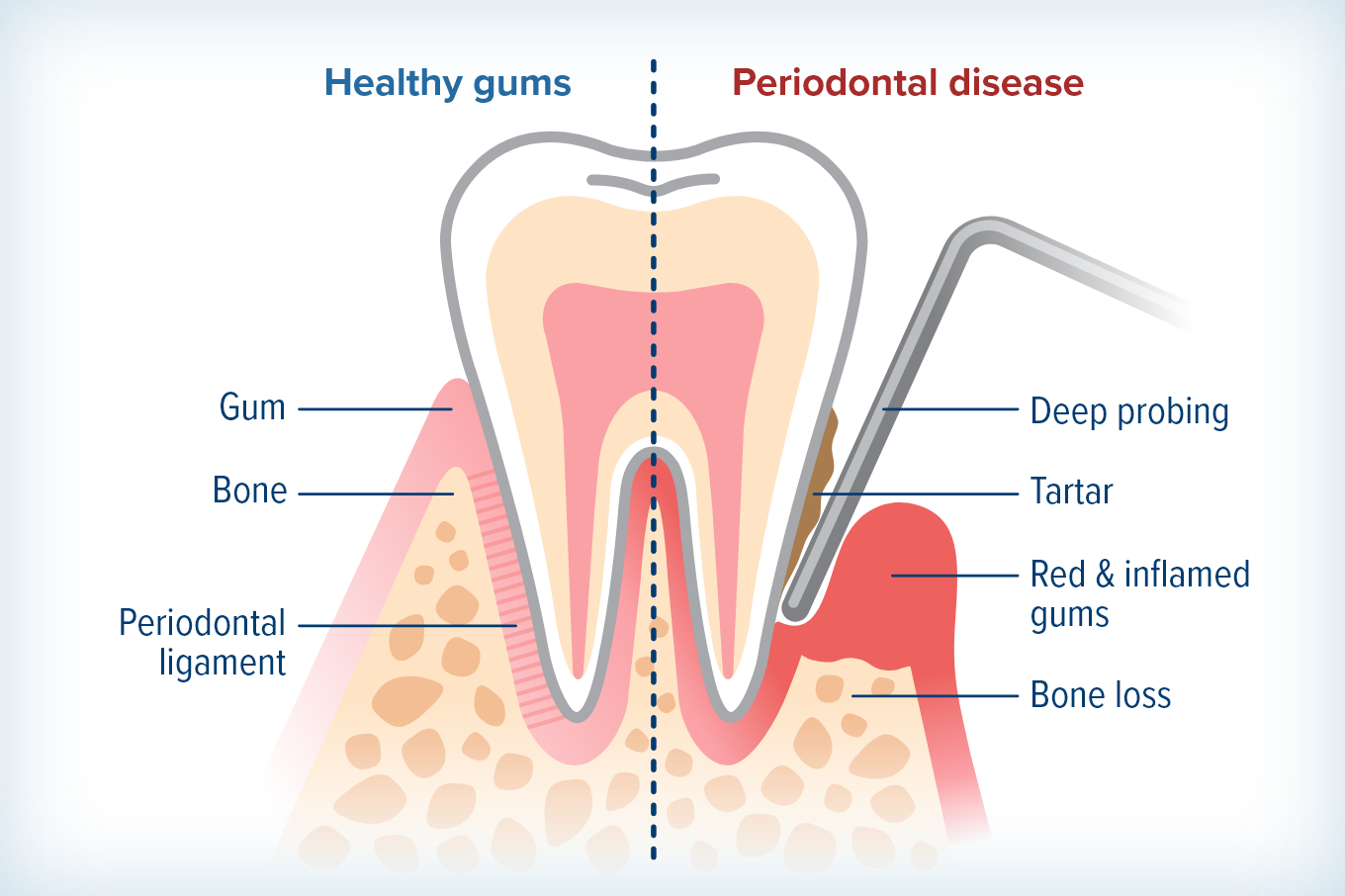Gum disease is an inflammation of the tissue around the teeth. Sometimes there are symptoms, but often it can be painless. Plaque is a soft, sticky substance that is produced by bacteria in the mouth every day. Since plaque is soft, it can be removed from the teeth when brushing and flossing. Gum disease generally starts when this sticky plaque isn’t removed. Over time, sticky plaque can harden and form tartar on the teeth. Brushing and flossing don’t remove tartar. A dental cleaning is needed to remove tartar. There are two main types of gum disease: gingivitis and periodontal disease.
Gingivitis affects soft tissue — gums can be red, puffy and inflamed, and bleed. It is the mildest form of gum disease. With good home care (brushing and flossing) and professional care (dental cleanings), gingivitis can be reversed.
If gingivitis isn’t resolved, it can lead to periodontal disease . Periodontal disease is more severe. It involves both the soft tissue and the bone that supports the teeth. It can cause irritation, swelling and bleeding in the gums. It can also be present, even if your gums aren’t swollen and don’t bleed. Periodontal disease causes loss of bone around the teeth, which can’t be reversed. With periodontal disease, the goal of regular cleanings and good home care is to keep bone loss from getting worse. If bone loss is severe — called advanced periodontal disease — teeth can become loose, leading to tooth loss.
Some risk factors for increased disease including age, stress, certain medications, smoking, and some systemic diseases (including diabetes). Smokers are twice as likely to have periodontal disease as non-smokers, and people with diabetes are two to three times more likely to have periodontal disease than people without diabetes.
Your dental provider will take X-rays and measure your gums around your teeth to assess their condition. Based on the condition of your teeth and gums, your dentist and dental hygienist will decide what type of cleaning you need and how often you need your teeth cleaned. Early and consistent dental cleanings can help stabilize periodontal disease and prevent it from getting worse.

